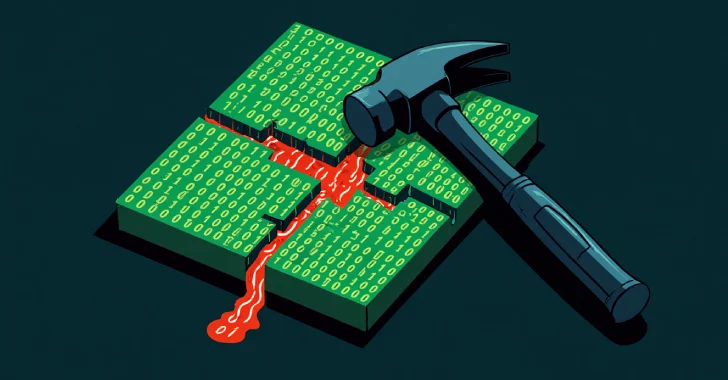In a significant development in hardware security, researchers from the University of Toronto have unveiled GPUHammer, a novel variant of the RowHammer attack that specifically targets NVIDIA’s graphics processing units (GPUs). This discovery underscores a critical vulnerability in GPU architecture, particularly concerning the integrity of artificial intelligence (AI) models that rely heavily on these processors.
Understanding RowHammer and Its Evolution
RowHammer is a well-documented hardware vulnerability that exploits the physical properties of dynamic random-access memory (DRAM). By repeatedly accessing (or hammering) specific memory rows, an attacker can induce electrical interference, leading to unintended bit flips in adjacent memory cells. This phenomenon can corrupt data, escalate privileges, and compromise system security.
Since its initial disclosure in 2014, RowHammer has evolved, with various iterations targeting different hardware components. Notably, the ZenHammer attack demonstrated vulnerabilities in AMD CPUs, while SpecHammer combined RowHammer with speculative execution attacks like Spectre to exploit CPUs further. The emergence of GPUHammer marks the first successful RowHammer exploit against NVIDIA GPUs, expanding the attack surface to include these critical components.
The Mechanics of GPUHammer
GPUHammer operates by inducing bit flips within the memory of NVIDIA GPUs, such as the A6000 model equipped with GDDR6 memory. Despite existing mitigations like Target Row Refresh (TRR), GPUHammer can effectively manipulate memory contents, leading to significant data corruption. In practical terms, the attack can degrade the accuracy of AI models from 80% to less than 1% by altering the most significant bit of the exponent in FP16-represented weights. This exponential change in parameter values results in dramatic reductions in model accuracy.
Implications for AI and Cloud Computing
The ramifications of GPUHammer are profound, especially considering the central role of GPUs in AI processing and cloud computing. AI models depend on the computational power of GPUs for tasks ranging from image recognition to natural language processing. A successful GPUHammer attack can compromise the integrity of these models, leading to erroneous outputs and undermining trust in AI systems.
In cloud environments, where GPUs are often shared among multiple tenants, GPUHammer poses a cross-tenant risk. A malicious actor could exploit this vulnerability to affect the workloads of other users, leading to data corruption or loss. This scenario highlights the need for robust isolation mechanisms and enhanced security protocols in shared GPU infrastructures.
NVIDIA’s Response and Mitigation Strategies
In response to the GPUHammer vulnerability, NVIDIA has issued a security advisory recommending the activation of System-Level Error Correction Codes (ECC) to mitigate the risk. Enabling ECC can be accomplished using the command `nvidia-smi -e 1`. While ECC provides a layer of protection by detecting and correcting memory errors, it comes with trade-offs, including a performance impact of up to 10% and a reduction in memory capacity by approximately 6.25%.
It’s noteworthy that newer NVIDIA GPU models, such as the H100 and RTX 5090, feature on-die ECC, which offers built-in resistance to RowHammer attacks. This advancement underscores the importance of hardware-level protections in mitigating such vulnerabilities.
Broader Context and Future Considerations
The discovery of GPUHammer is part of a broader trend of evolving RowHammer attacks. For instance, the Half-Double technique demonstrated that RowHammer effects could extend beyond immediate neighboring rows, challenging existing defenses. Similarly, the Throwhammer attack showcased the potential for RowHammer exploits to be executed remotely via network packets, further expanding the threat landscape.
These developments highlight the need for continuous research and adaptation in hardware security. As memory densities increase and hardware components become more complex, the potential for such vulnerabilities grows. Proactive measures, including hardware redesigns, enhanced error detection and correction mechanisms, and comprehensive security protocols, are essential to safeguard against these evolving threats.
Conclusion
The emergence of GPUHammer serves as a stark reminder of the persistent and evolving nature of hardware vulnerabilities. As GPUs continue to play a pivotal role in AI and high-performance computing, ensuring their security is paramount. Stakeholders must remain vigilant, adopting recommended mitigations and staying informed about emerging threats to protect the integrity of AI models and the broader computing infrastructure.



